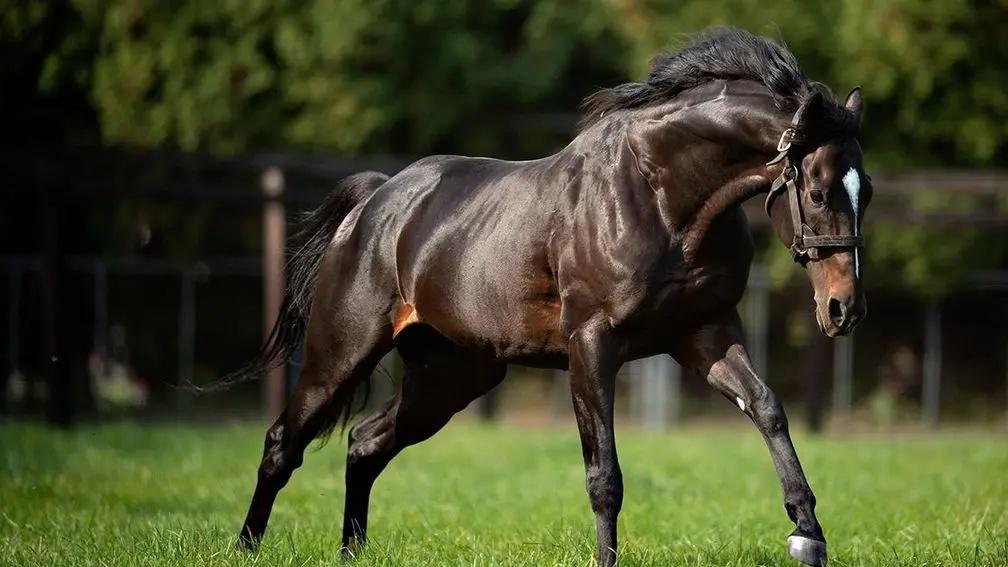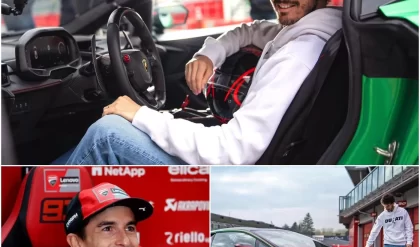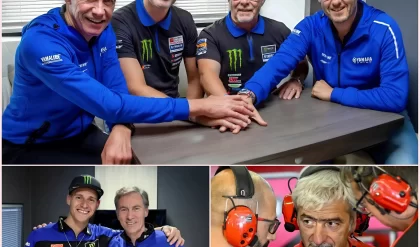In the world of thoroughbred breeding, where tradition meets innovation, a remarkable story is unfolding. Ecurie des Monceaux, a leading French breeding operation, has made headlines by sending one of its prized mares, Sea La Venus, on an extraordinary 12,700km journey from Normandy to Japan’s prestigious Shadai Stallion Station. This bold move, driven by the pursuit of exceptional bloodlines, underscores the growing globalization of the bloodstock industry and the tantalizing potential of crossing European and Japanese genetics. The mare, a full-sister to the talented The Lion In Winter, was sent to be covered by Kitasan Black, a Japanese stallion whose progeny, including the world-class Equinox, have taken the racing world by storm.

Henri Bozo, director of Monceaux, shared his enthusiasm for this international venture, reflecting on his visit to Japan in 2024. “I went to Japan for the first time last year when Shin Emperor was third in the Japanese Derby,” Bozo said. “I visited some farms and saw some stallions, and was very impressed with what I saw. I’ve been very impressed with the results of Japanese horses around the world, so I think there are some very interesting nicks to be created between Europe and Japan.” His words capture the curiosity and ambition driving this project, as Monceaux seeks to blend the best of European and Japanese bloodlines to produce future champions.
The decision to send Sea La Venus to Kitasan Black was no spur-of-the-moment choice. Purchased for 200,000gns at Tattersalls in December 2024, Sea La Venus is a daughter of Sea The Stars, a sire renowned for his ability to produce top-class performers. Kitasan Black, a son of Black Tide, has emerged as one of Japan’s most influential stallions, with his offspring commanding staggering prices at sales. At the recent JRHA Select Sale, a Kitasan Black colt out of Australian Group 1 winner Mosheen fetched ¥420 million (£2.116m/€2.442m), highlighting the stallion’s market dominance. Bozo’s admiration for Kitasan Black was immediate. “We’ve sent a mare we bought in Tattersalls, she’s a full-sister to The Lion In Winter, and we’ve decided to send her to Kitasan Black, who is a stallion I was absolutely impressed with,” he said. The mare, now safely back at Monceaux and in foal, represents a calculated step toward creating a foal with global potential.

This transcontinental mating is not Monceaux’s first foray into Japanese bloodstock. In 2022, the Normandy-based operation topped the Arqana August Yearling Sale when trainer Yoshito Yahagi paid €2,100,000 for Shin Emperor, a brother to the Group 1 winner Sottsass. Shin Emperor’s success, including his third-place finish in the Japanese Derby, reinforced Monceaux’s belief in the compatibility of European and Japanese genetics. The operation’s broader mating strategy also reflects a commitment to diversity, with mares covered by elite European stallions like Frankel, Night Of Thunder, Too Darn Hot, Siyouni, and Wootton Bassett, as well as exciting newcomers Charyn and City Of Troy. Yet, the journey of Sea La Venus to Japan signals a willingness to push boundaries, embracing the challenges of distance and logistics for the promise of something extraordinary.
The globalization of thoroughbred breeding is a topic that sparks intrigue among racing enthusiasts. Japanese bloodlines, once considered a niche market, have gained international acclaim, with horses like Equinox dominating global stages. The success of Japanese stallions is not limited to their home turf; their progeny are making waves in Europe, North America, and Australia. Monceaux’s decision to tap into this market reflects a broader trend among top breeders to explore new genetic combinations. As Bozo noted, “We’re all trying to see which stallions can fit our mares best. Sometimes that’s a stallion who’s far away, but that’s part of the interesting globalization of our business.” This sentiment highlights the evolving nature of the industry, where geographical barriers are no longer insurmountable.

The logistics of sending a mare halfway across the world are daunting, requiring meticulous planning and significant investment. The 12,700km journey from Normandy to Hokkaido is not merely a physical distance but a testament to the ambition driving modern breeding operations. Sea La Venus’s safe return, now carrying a Kitasan Black foal, is a triumph of both science and vision. Monceaux plans to offer the resulting progeny at the Arqana August Sale in 2027, a move that will likely draw significant attention from buyers worldwide. The operation’s confidence in this cross is bolstered by the success of Kitasan Black’s progeny, whose combination of stamina, speed, and versatility aligns well with the European mare’s pedigree.
The partnership between Monceaux and Japanese bloodstock is also a reflection of the operation’s evolving structure. Recently, Monceaux welcomed leading jumps owner Brian Acheson as a new partner, bringing fresh perspectives and resources to the stud. This collaboration has enabled Monceaux to expand its horizons, supporting high-profile matings across Britain, France, Ireland, and now Japan. The operation’s willingness to experiment with international stallions like Kitasan Black and Not This Time (another sire Monceaux has used this year) demonstrates a forward-thinking approach that could redefine thoroughbred breeding.
For racing fans, the story of Sea La Venus’s journey is more than a logistical feat; it’s a glimpse into the future of the sport. The potential of combining European and Japanese bloodlines sparks curiosity about what these foals might achieve. Will they inherit the explosive speed of their European dams or the relentless stamina of their Japanese sires? Could they dominate classic races in Europe or make their mark in Japan’s prestigious Group 1 contests? The answers lie in the years ahead, but the anticipation is palpable.
The bloodstock industry thrives on such bold experiments, where risk meets opportunity. Monceaux’s decision to send Sea La Venus to Japan is a reminder that the pursuit of excellence knows no borders. As the industry continues to globalize, stories like this will become more common, with breeders seeking out the best stallions, regardless of where they stand. The success of Japanese horses on the world stage, from Deep Impact’s legacy to Equinox’s brilliance, has opened doors for collaborations that were once unthinkable. Monceaux’s venture is a pioneering step, one that could inspire other breeders to explore similar paths.
In a world where thoroughbred racing is as much about science as it is about passion, the journey of Sea La Venus captures the imagination. It’s a story of ambition, innovation, and the relentless pursuit of greatness. As Henri Bozo aptly put it, “There are some very interesting nicks to be created between Europe and Japan.” With the foal due to arrive and the Arqana August Sale on the horizon, the racing world will be watching closely, eager to see the results of this extraordinary transcontinental gamble.





